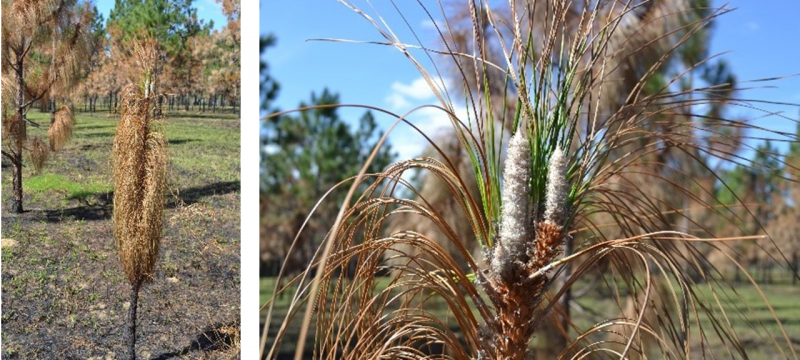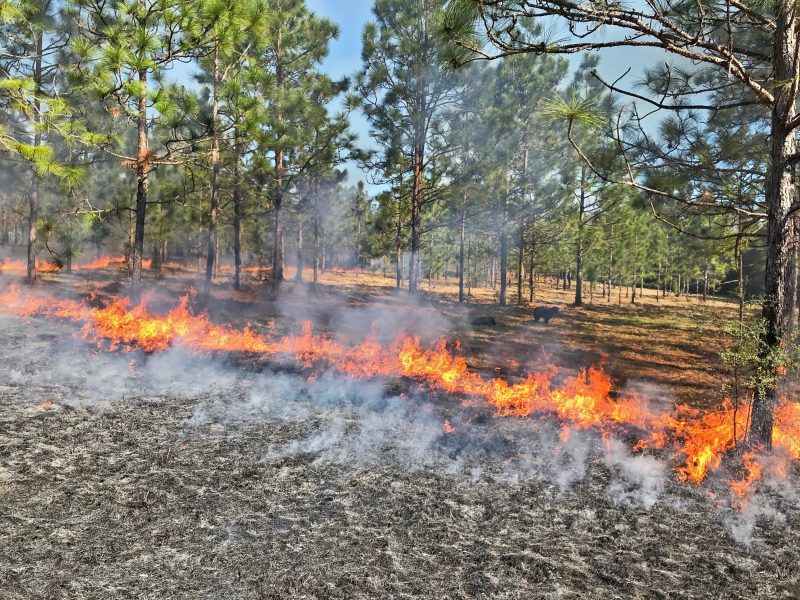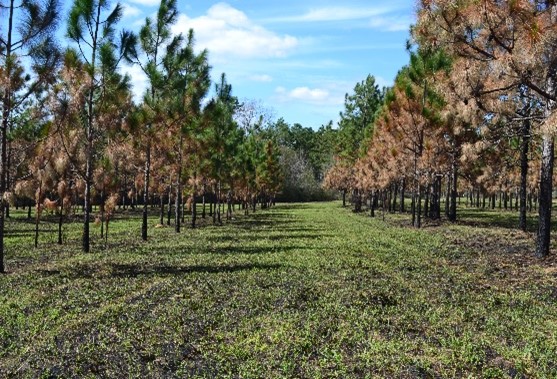–
In a silvopasture setting, you must consider both grass and tree management when doing a prescribed burn or other practices. We know that controlled, or prescribed burning can be beneficial to both plant communities. Depending on species of pine, initial burning of a silvopasture stand can begin at different times. It may start in year two for longleaf pine, whereas a loblolly pine stand should not be burned until year 12 or later.
–
On the other hand, our common perennial grasses (bahiagrass and bermudagrass) can be burned every winter/early spring once they are well established. Limiting late fall grazing to maintain 2–4-inches of stubble will insure adequate fuel for a good winter pasture burn. Burning right before green-up is most beneficial timing for controlling weeds and diseases in the pasture grass. Burning can also add some potash to the soil. Plus, old thatch is removed allowing more sunlight and room for new grass growth.
Burning a silvopasture stand removes excess pine needles between the rows of trees, improving grazing and hay quality. Some research in the western United States has shown pine needles can affect cattle health if too many are consumed; this has not been a concern in our area. Most of the effects have been found in cattle consuming ponderosa pine needles during the last trimester of gestation. Studies indicate that a cow’s body conditions and level of protein supplementation can effect their level of pine needle consumption. Cows with low body condition and/or high levels of protein supplementation are more likely to consume larger amounts of pine needles (Pfister, et.al. 2008).
Longleaf pine is very resistant to fire due to its apical meristem (growing bud) located at the top of the tree or seedling (Fig. 3). Fire helps control brown-spot needle blight in pine seedlings and saplings. Occasional flare-ups in a control burn can kill pines, but as long as at least 10% of the green needles remain, the tree has a good chance of survival. It can take at least a week to determine the amount of pine needle scorch caused by a burn ( Fig. 2).

Fig. 3 Pine needles are all scorched, but the bud is still green, so trees will recover from a control burn. Credit: Mike Goodchild, UF/IFAS
–
Other Management Activities in Silvopasture:
- If herbicide use is necessary for weed control, be sure to consult labels carefully to be sure that the product used is safe for use in both bahiagrass and pine trees.
- If cutting hay, pruning pine tree branches to a height of 16 feet in taller pines will protect equipment from damage from branches.
- Any type of deep tillage between the rows of pines can also damage the tree roots.
–
Additional Resources:
USDA Inside Agroforestry – Silvopasture Articles
Mississippi State: When Will A Prescribed Burn Help My Pine Stand?
Effect of body condition on consumption of pine needles by beef cows
- What are the Benefits of Freezer Beef? - August 27, 2021
- Fire Management in a Silvopasture System - March 19, 2021
- Game Cameras for Wildlife Monitoring - October 2, 2020


